
A carbon nanotube (CNT) is a tube made of carbon with a diameter in the nanometre range (nanoscale). They are one of the allotropes of carbon.
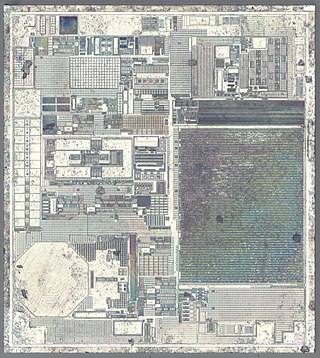
Nanoelectromechanical systems (NEMS) are a class of devices integrating electrical and mechanical functionality on the nanoscale. NEMS form the next logical miniaturization step from so-called microelectromechanical systems, or MEMS devices. NEMS typically integrate transistor-like nanoelectronics with mechanical actuators, pumps, or motors, and may thereby form physical, biological, and chemical sensors. The name derives from typical device dimensions in the nanometer range, leading to low mass, high mechanical resonance frequencies, potentially large quantum mechanical effects such as zero point motion, and a high surface-to-volume ratio useful for surface-based sensing mechanisms. Applications include accelerometers and sensors to detect chemical substances in the air.

Pulickel Madhavapanicker Ajayan, known as P. M. Ajayan, is the Benjamin M. and Mary Greenwood Anderson Professor in Engineering at Rice University. He is the founding chair of Rice University's Materials Science and NanoEngineering department and also holds joint appointments with the Department of Chemistry and Department of Chemical and Biomolecular Engineering. Prior to joining Rice, he was the Henry Burlage Professor of Material Sciences and Engineering and the director of the NYSTAR interconnect focus center at Rensselaer Polytechnic Institute until 2007. Known for his pioneering work of designing and carrying out the first experiments to make nanotubes intentionally.
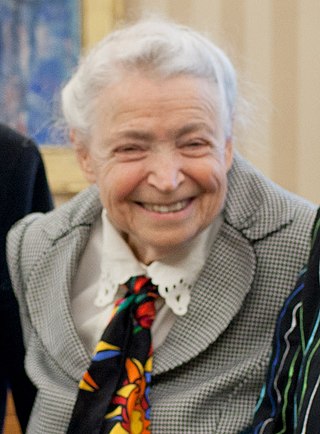
Mildred Dresselhaus, known as the "Queen of Carbon Science", was an American physicist, materials scientist, and nanotechnologist. She was an institute professor and professor of both physics and electrical engineering at the Massachusetts Institute of Technology. She also served as the president of the American Physical Society, the chair of the American Association for the Advancement of Science, as well as the director of science in the US Department of Energy under the Bill Clinton Government. Dresselhaus won numerous awards including the Presidential Medal of Freedom, the National Medal of Science, the Enrico Fermi Award, the Kavli Prize and the Vannevar Bush Award.
Phaedon Avouris is a Greek chemical physicist and materials scientist. He is an IBM Fellow and was formerly the group leader for Nanometer Scale Science and Technology at the Thomas J. Watson Research Center in Yorktown Heights, New York.
Hybrid solar cells combine advantages of both organic and inorganic semiconductors. Hybrid photovoltaics have organic materials that consist of conjugated polymers that absorb light as the donor and transport holes. Inorganic materials in hybrid cells are used as the acceptor and electron transporter in the structure. The hybrid photovoltaic devices have a potential for not only low-cost by roll-to-roll processing but also for scalable solar power conversion.

Nanocomposite is a multiphase solid material where one of the phases has one, two or three dimensions of less than 100 nanometers (nm) or structures having nano-scale repeat distances between the different phases that make up the material.
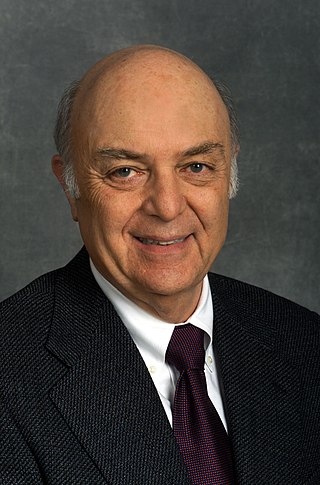
Marvin Lou Cohen is an American–Canadian theoretical physicist. He is a physics professor at the University of California, Berkeley. Cohen is a leading expert in the field of condensed matter physics. He is widely known for his seminal work on the electronic structure of solids.

Carbon nanotubes (CNTs) are cylinders of one or more layers of graphene (lattice). Diameters of single-walled carbon nanotubes (SWNTs) and multi-walled carbon nanotubes (MWNTs) are typically 0.8 to 2 nm and 5 to 20 nm, respectively, although MWNT diameters can exceed 100 nm. CNT lengths range from less than 100 nm to 0.5 m.
As the world's energy demand continues to grow, the development of more efficient and sustainable technologies for generating and storing energy is becoming increasingly important. According to Dr. Wade Adams from Rice University, energy will be the most pressing problem facing humanity in the next 50 years and nanotechnology has potential to solve this issue. Nanotechnology, a relatively new field of science and engineering, has shown promise to have a significant impact on the energy industry. Nanotechnology is defined as any technology that contains particles with one dimension under 100 nanometers in length. For scale, a single virus particle is about 100 nanometers wide.
The following outline is provided as an overview of and topical guide to nanotechnology:
Polymer nanocomposites (PNC) consist of a polymer or copolymer having nanoparticles or nanofillers dispersed in the polymer matrix. These may be of different shape, but at least one dimension must be in the range of 1–50 nm. These PNC's belong to the category of multi-phase systems that consume nearly 95% of plastics production. These systems require controlled mixing/compounding, stabilization of the achieved dispersion, orientation of the dispersed phase, and the compounding strategies for all MPS, including PNC, are similar. Alternatively, polymer can be infiltrated into 1D, 2D, 3D preform creating high content polymer nanocomposites.
Organic photovoltaic devices (OPVs) are fabricated from thin films of organic semiconductors, such as polymers and small-molecule compounds, and are typically on the order of 100 nm thick. Because polymer based OPVs can be made using a coating process such as spin coating or inkjet printing, they are an attractive option for inexpensively covering large areas as well as flexible plastic surfaces. A promising low cost alternative to conventional solar cells made of crystalline silicon, there is a large amount of research being dedicated throughout industry and academia towards developing OPVs and increasing their power conversion efficiency.
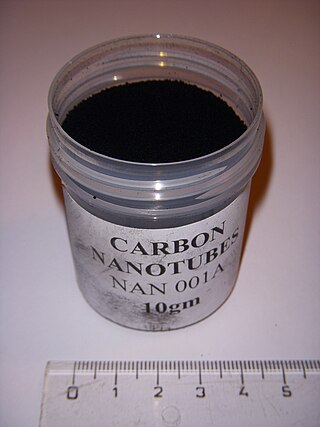
The optical properties of carbon nanotubes are highly relevant for materials science. The way those materials interact with electromagnetic radiation is unique in many respects, as evidenced by their peculiar absorption, photoluminescence (fluorescence), and Raman spectra.
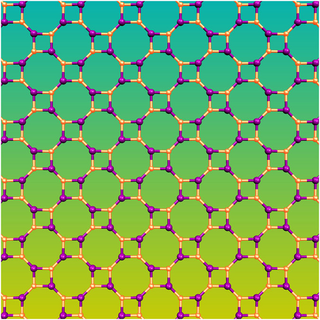
Haeckelites are members of a proposed family of hypothetical carbon allotropes. The carbon atoms would be arranged in a trivalently coordinated structure generated by a periodic arrangement of pentagonal, hexagonal and heptagonal carbon rings. They have not yet been synthesised in the laboratory, but have been the subject of a considerable amount of theoretical work and numerical simulation. They were first proposed by Humberto and Mauricio Terrones and their colleagues in 2000.
Graphene-Boron Nitride nanohybrid materials are a class of compounds created from graphene and boron nitride nanosheets. Graphene and boron nitride both contain intrinsic thermally conductive and electrically insulative properties. The combination of these two compounds may be useful to advance the development and understanding of electronics.
In nanotechnology, carbon nanotube interconnects refer to the proposed use of carbon nanotubes in the interconnects between the elements of an integrated circuit. Carbon nanotubes (CNTs) can be thought of as single atomic layer graphite sheets rolled up to form seamless cylinders. Depending on the direction on which they are rolled, CNTs can be semiconducting or metallic. Metallic carbon nanotubes have been identified as a possible interconnect material for the future technology generations and to replace copper interconnects. Electron transport can go over long nanotube lengths, 1 μm, enabling CNTs to carry very high currents (i.e. up to a current density of 109 A∙cm−2) with essentially no heating due to nearly one dimensional electronic structure. Despite the current saturation in CNTs at high fields, the mitigation of such effects is possible due to encapsulated nanowires.
Elisa Molinari is an Italian physicist from the University of Modena and CNR, Italy. She has been primarily interested in computational materials science and nanotechnologies, and she has been particularly active in the theory of fundamental properties of low-dimensional structures, in the simulation of nanodevices, in the development of related computational methods. She also has a continuing interest in scientific imaging and communication.
Caterina Ducati is a Professor of Nanomaterials in the Department of Materials at the University of Cambridge. She serves as Director of the University of Cambridge Master's programme in Micro- and Nanotechnology Enterprise as well as leading teaching in the Nanotechnology Doctoral Training Centre.

David Tománek (born July 1954) is a U.S.-Swiss physicist of Czech origin and researcher in nanoscience and nanotechnology. He is Emeritus Professor of Physics at Michigan State University. He is known for predicting the structure and calculating properties of surfaces, atomic clusters including the C60 buckminsterfullerene, nanotubes, nanowires and nanohelices, graphene, and two-dimensional materials including phosphorene.









